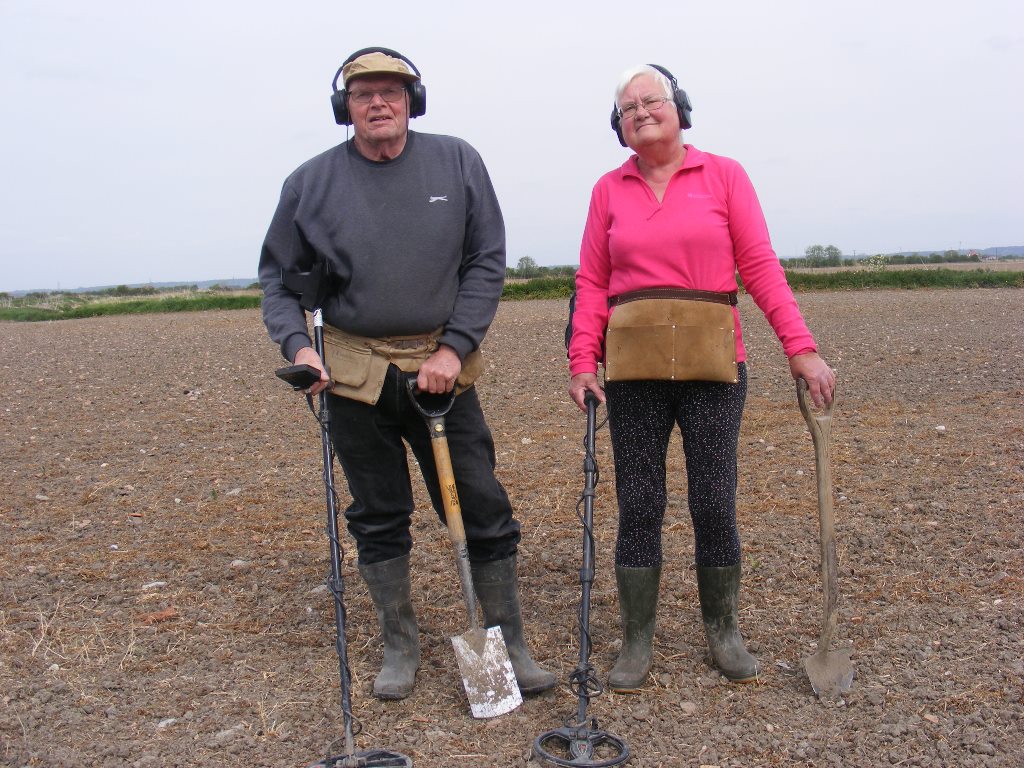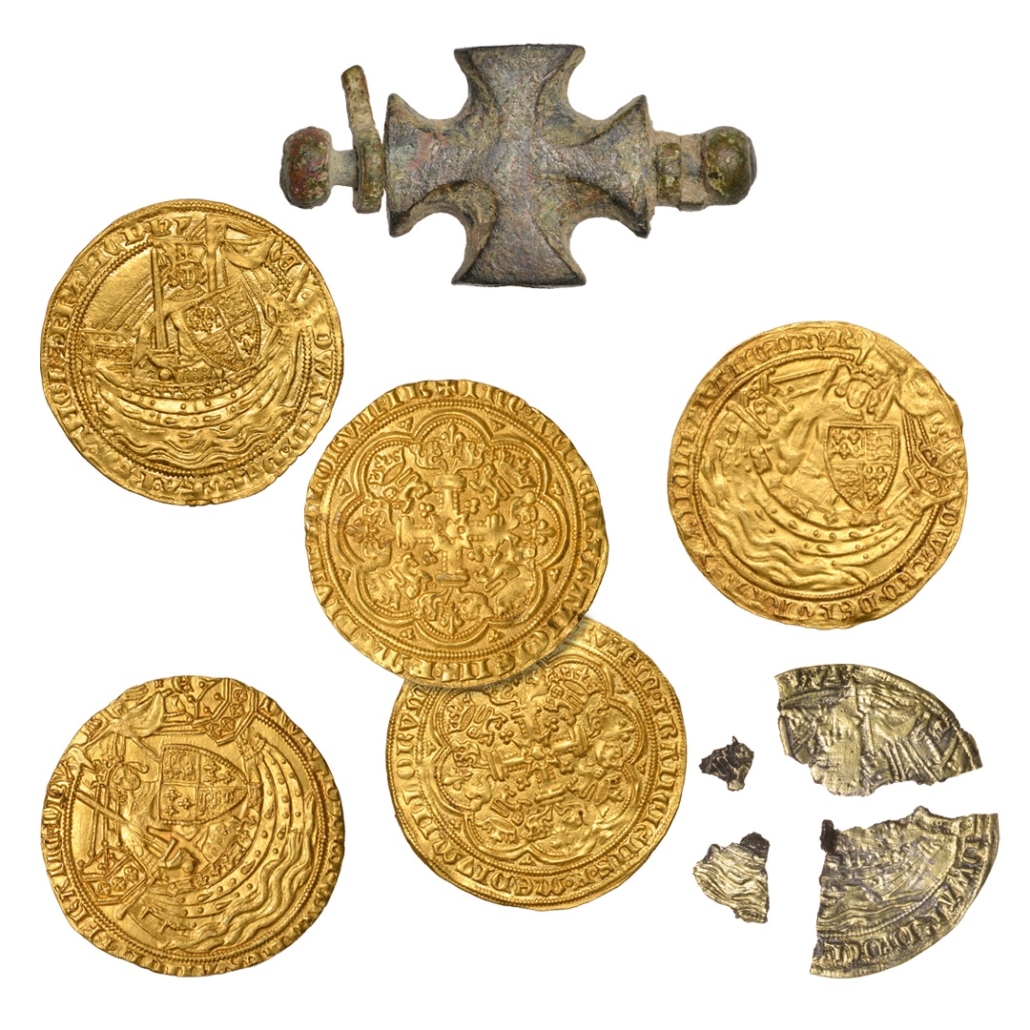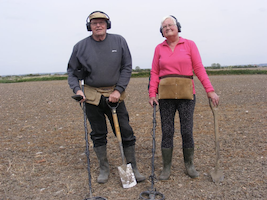
LONDON – Phil and Joan Castle, who live in New Romney in Kent, England, have been hunting treasure with metal detectors for more than 30 years. It was in October 2018, while searching one of their favorite plowed fields at nearby Romney Marsh that Joan, using her XP gold max metal detector, found a broken gold coin on the surface. Another signal beside it in the soil revealed a medieval brass purse bar at eight inches down. Phil came over to help and immediately found a gold coin. During the next two hours, the married couple uncovered four more gold coins in an area of five meters, with Joan finding two herself. The purse bar and the coins, which are estimated at £12,000-£15,000, will be offered for sale by specialist coin, medal, banknote and jewelry auctioneers Noonans (previously Dix Noonan Webb) on Tuesday, May 24.
Noonans Consultant for Artefacts and Antiquities Nigel Mills explained: “The coins were recorded by Jo Ahmet, the finds liaison officer for Kent, as gold nobles of Edward III, issued between 1351 and 1361. This was the first significant issue of gold coins that was successful after the previous attempts had failed and the coins were subsequently recalled and melted down. At the time, these were the highest-denomination coins in circulation, with a face value of six shillings and eight pence, which is about £2,500 (roughly $3,100) per coin in today’s money. Measuring 3.4cm (about one and one-third inches) in diameter, they portray the king in a ship holding a sword and shield on the obverse, with a royal cross on the reverse.”

He continued: “Purse hoards are not common, and when they do turn up, they usually contain just silver coins, so this one is special. Apart from the broken coin, which is a plated contemporary forgery, all five gold coins are in virtually mint state and must have been lost.”
Phil, who is 71 years old, was introduced to the hobby of metal detecting by Joan, age 70, who searched for fossils and loved mudlarking (scavenging for valuable objects lost on riverbanks) on the River Thames.
Phil said: “We had no idea what the coins were when we found them,” and added, “At the time, I was having chemo for leukemia, so detecting was a great relief.”

The hoard has been disclaimed under Britain’s Treasure Act and Joan is hoping she and Phil can underwrite a new kitchen with their share of the proceeds, which will be split with the land owner.
Update, May 24, 2022: The Romney Marsh hoard sold for a total of £39,550 (about $49,700).
# # #



